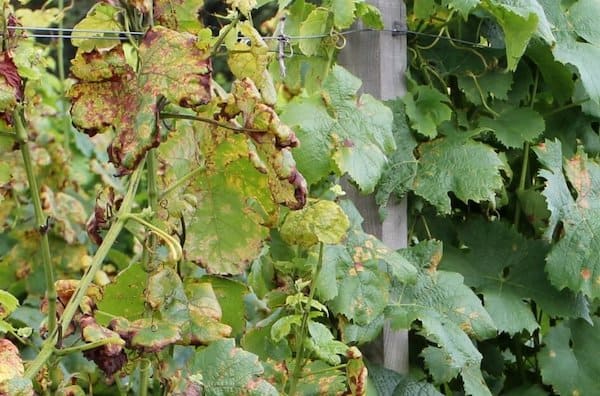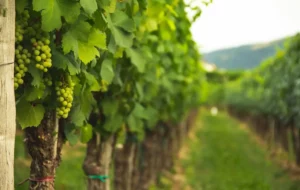Just like all plants that grow in a natural environment, vines and their development are highly dependent on the weather. Sufficient rainfall, good soil quality and moderate sunlight are a guarantee for optimal plant growth - and make the vintner happy. But, unfortunately, not only the vine is strongly dependent on the weather, but also its worst enemies are: fungal diseases. This article is about the fungal disease Downy mildew.
Many german winemakers may remember 2016, when one of the most common fungal diseases, Downy mildew (Pathogen: Plasmopara viticola) , destroyed up to 50% of the yield in some vineyards. A catastrophe. What had happened? After a mild winter, enormous amounts of precipitation, up to 430 liters in January, pelted the vineyards. In addition, there were fewer hours of sunshine than at any time in the last 35 years. The result: perfect weather conditions for the infection and spread of downy mildew on grapevines. But how exactly does this fungal disease behave, how does the weather favor the spread of this fungus, and how can it be predicted?
Downy mildew is the most dangerous of all vine diseases
The Downy mildew is one of the most common fungal diseases for grapevines in Europe, which makes it very difficult to reduce the use of copper in viticulture. The disease is caused by the fungus Plasmopara viticola, which can infect not only grapevines but also apple or pear trees.
Downy mildew damage pattern
If the fungus has attacked the grapevines, the disease reveals a white-furred coating on the underside of the leaves (Fig. 1 & 2). Another indication of an infestation is so-called "oil spots", i.e. bright, circular spots on the upper side of the leaves (Fig. 3 & 4).
If the disease is advanced, the infected leaves fall off. Fruit clusters can also become infected, which generates the most yield loss. When infected, the grapes shrivel, turn brown and die (leather berries, Figs. 5 & 6). Thus, the risk of infection is present at every stage of development, which is why Downy mildew is often referred to as the most dangerous of all grapevine diseases .
Weather determines the development of downy mildew of grapevine
Weather plays a role in all steps of Downy mildew development. For a fungus to reproduce, it needs spores. In Downy mildew, these "winter spores" overwinter in the soil and can survive for up to 10 years. Even as these spores germinate, the weather is crucial. If the soil is wet and moist and temperatures are mild (min. 10°C), the fungus germinates and sends out so-called "swarm spores". Through precipitation, raindrops carry the swarm spores from the soil to the underside of the leaves of the vine plant - like on a trampoline. In this way, the spores can now penetrate the plant through the stomata on the underside of the leaf and infect it.
In order for the fungus to form its "summer spores", which later lead to the disease characteristics described above, the fungus is now again heavily dependent on the weather. Favorable conditions for sporulation are: 1. mild temperatures (min. 12°C), 2. high relative humidity, or 3. high Leaf wetness (and 4. darkness, since formation only occurs at night). When these conditions are present, the spread of the disease begins. The longer the weather conditions the formation of the summer spores , the more the disease spreads and the more serious the consequences for the winegrowers.
VineForecast: In the fight against the Downy mildew and Co.
The weather is therefore a major contributor to the development and spread of Downy mildew. So if one wants to venture a forecast on the spread of Downy mildew, one must be able to reliably assess the weather situation. Could the catastrophic spread of the disease in 2016 have been predicted? Of course, it is not possible to say exactly. What is certain, however, is that long-term observation of the individual weather conditions, such as temperature, rainfall and leaf wetness, would have led to a relatively reliable estimate of the spread.
With the VineForecast forecasting system , we have specialized in detecting these infection weather conditions at an early stage. In this way, we want to help ensure that crop failures due to Downy mildew are not as dramatic as they were in 2016. In the future, we will use our tool to reliably forecast Downy mildew weather conditionsin order to stay one step ahead of the disease. Other diseases are also affected by weather. Therefore, VineForecast not only gives Downy mildew forecasts, but also forecasts for the fungal diseases Powdery mildew and Botrytis (gray mold, starting in 2022).




